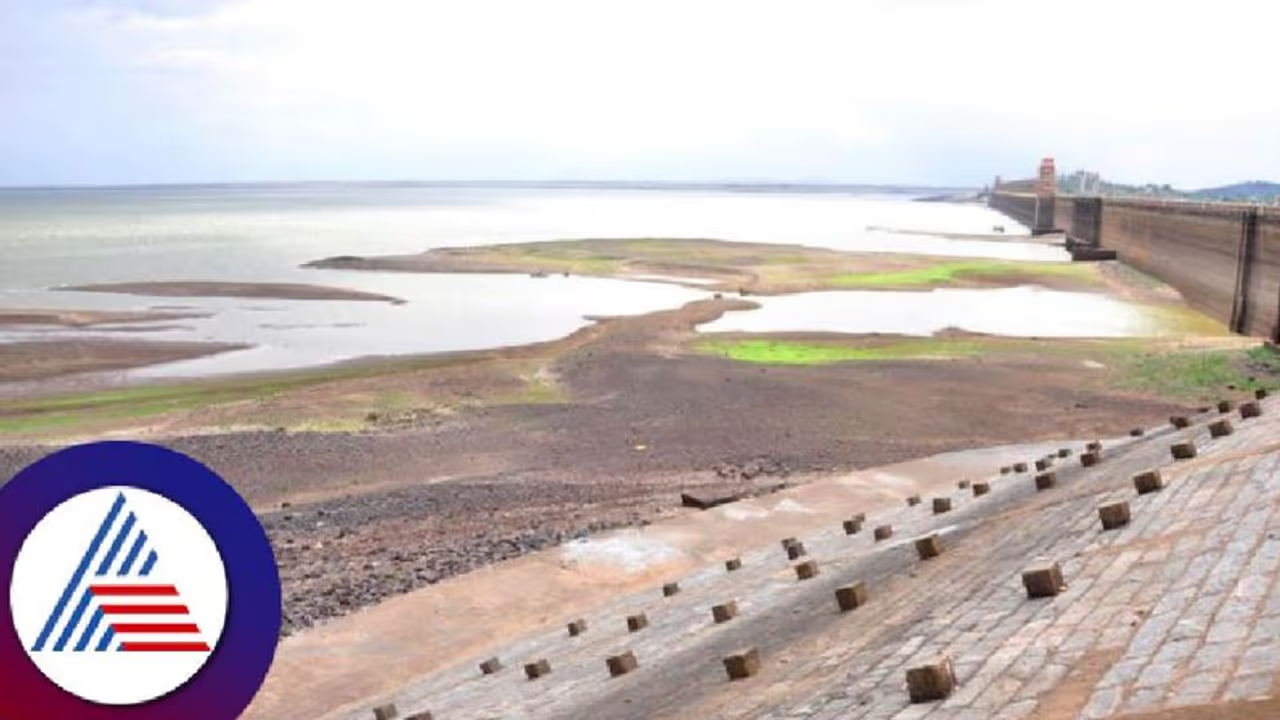The Tungabhadra reservoir in Karnataka is facing a severe water shortage, endangering marine species, birds, and otters. The dead storage situation has led to a decline in water levels, affecting the ecosystem and causing distress to animals dependent on the reservoir. Lack of rainfall exacerbates the challenges farmers and industries face relying on this water supply.
The birds that depend on fish are struggling to find prey along the backwaters of the Tungabhadra Dam in Hosapete, Ballari district, which now resembles a drought-affected area. The water level in the Tungabhadra reservoir faces dead storage, posing a threat to aquatic animals and birds.

The otters living in the river are now struggling to get sufficient water. The am is in proximity to Kampli, which is an otter sanctuary. Several otters live in the reservoir along with tortoises. These beautiful animals stare at death if the dam continues to empty the backwaters. The lack of rainfall is the sole reason for the reservoir to suffer drought, say officials.
Exclusive: Dozens of fishes found floating on Ulsoor Lake post heavy rains in city
With a storage capacity of 105.766 TMC (thousand million cubic feet), the Tungabhadra Dam faces a water shortage. Last year, only 47 TMC of water was stored, and currently, only 3.003 TMC remains in the reservoir. Unfortunately, 2 out of 3 TMCs of this remaining water are classified as dead storage, which means it cannot supply water to the surrounding cities.
Due to this water shortage, the backwaters of Tungabhadra Dam, particularly in the Gunda Reserved Forest area, are experiencing a distressing phenomenon -- dead fish. The local farmers are not only concerned about the lack of water but also eagerly awaiting rainfall, hoping it will alleviate the situation and bring relief to the region.
However, as we approach the end of June, there is still no sign of expected rainfall in the area, exacerbating the challenges faced by the community.
The silent suffering of birds and waterfowl
Depending on the backwaters, the birds and the waterfowl face distress due to the dead storage in the reservoir. Spotted ducks, storks, ibis, storks, egrets, black-winged stilt, grebe, sand grebe, seagulls, water crows, ducks etc., will be in dire straits if the situation continues. The territory hosts several animal species. There are more than 90 fish species in the reservoir.
The Tungabhadra reservoir is crucial in providing water to approximately 3.5 lakh hectares of farmland across the districts of Raichur, Koppala, Bellary, and Vijayanagara. Unfortunately, the dead storage situation has led to a shortage of water supply, significantly impacting farmers who rely on it for irrigation. Additionally, various industries also depend on this water supply.
THESE states to receive rainfall as Monsoon covers entire country 6 days early
Currently, the reservoir is receiving an inflow of 190 q.sec. While parts of Coastal Karnataka, including Agumbe, Theerthahalli, Koppa, Shimoga, and Davangere, are grappling with heavy rainfall, the Kalyan Karnataka region is facing a distressing lack of rainfall.
If the water storage in the Tungabhadra reservoir depletes completely, it will have fatal consequences for numerous species of fish, birds, tortoises, and crocodiles. Moreover, the absence of an adequate water supply will contribute to the growth of fungi, seaweed, and other waste in the reservoir, posing a threat to the waterfowl population.
